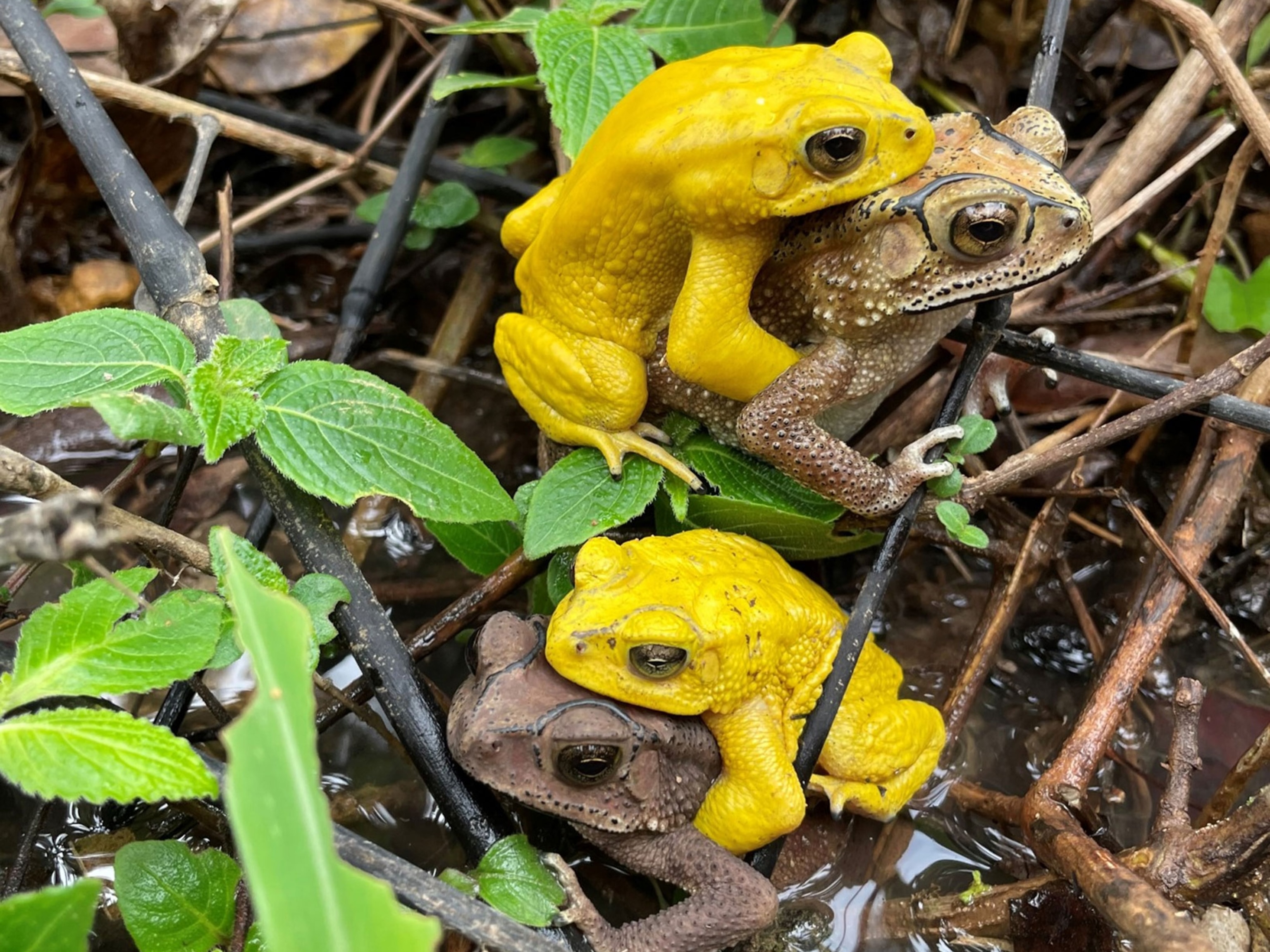
Rainbow Toad Rediscovered, Photographed for First Time
"Extinct" amphibian seen for first time in 87 years.
A colorful, toxic toad that was last seen 87 years ago—and never photographed—has been rediscovered in the jungles of Southeast Asia.
Called the Sambas stream toad or Bornean rainbow toad, the elusive amphibian was last spotted by European explorers in 1924.
The toad has unusually long limbs and a pebbly back covered with bright red, green, yellow, and purple warts.
Like many other colorful amphibians, the toxic toad's appearance is likely a warning to potential predators, said Robin Moore, an amphibian expert with Conservation International.
"You can see the skin is rough, which usually indicates the presence of poison glands," Moore said.
"You probably don't want to put this in your mouth."
(Related pictures: "Bubble-nest Frog, Other 'Extinct' Species Found.")
Rainbow Toad Found Up a Tree
Despite its flamboyant appearance, the rainbow toad is known from only three specimens and a black-and-white drawing from the 1920s.
Suspecting the toad might still be alive, Conservation International and the International Union for Conservation of Nature's Amphibian Specialist Group included the species as one of its ten most wanted amphibians in a 2010 global campaign to find "extinct" species.
That faith was rewarded this summer, when a team led by ecologist Indraneil Das rediscovered the toad in the mountain jungles of western Sarawak, which is located between Malaysia's Sarawak state and Indonesia's Kalimantan Barat Province.
As part of their search, the team led by Das, of the University of Malaysia, looked at close relatives of the rainbow toad to estimate where and when the species would most likely be active.
After months of searching, the team spotted the long-lost toad six feet (two meters) up a tree. A total of three rainbow toads—an adult male, an adult female, and a juvenile—were found.
"They pieced its [behavior] together from related species," Moore said. "They suspected it might be climbing trees, and they knew to search at night along streams. But a lot of it was still guesswork."
The rainbow toad is only the second species—along with Ecuador's critically endangered Rio Pescado stubfoot toad (picture)—to be found from the most wanted list.
Scientist Shocked By Discovery
Moore recalled being flabbergasted when he was emailed about the toad's rediscovery.
"To see the first-ever pictures of a species is a special kind of privilege. To see the first pictures of a species that has been lost for almost 90 years defies belief," Moore said in a statement.
"The species was transformed in my mind from a black-and-white illustration to a living, colorful creature."
(Read about vanishing amphibians in National Geographic magazine.)
Moore added that the rainbow toad's rediscovery could help encourage research in its habitat, still largely unsurveyed by scientists.
"I think it's important as a flagship species," Moore said.
"Researchers can use it to highlight conservation in this area and secondly to study a subject that will tell us more about amphibians in this relatively unexplored area."





